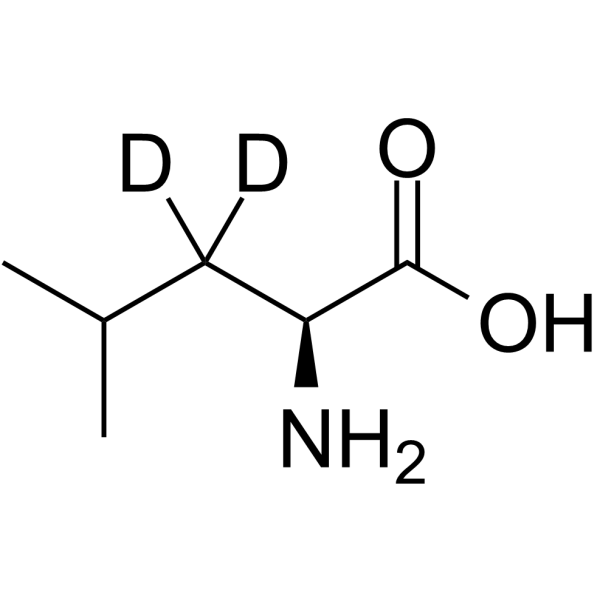L-(3,3-2H2)Leucine
Modify Date: 2024-01-10 10:07:24

L-(3,3-2H2)Leucine structure
|
Common Name | L-(3,3-2H2)Leucine | ||
|---|---|---|---|---|
| CAS Number | 362049-59-0 | Molecular Weight | 133.185 | |
| Density | 1.0±0.1 g/cm3 | Boiling Point | 225.8±23.0 °C at 760 mmHg | |
| Molecular Formula | C6H11D2NO2 | Melting Point | N/A | |
| MSDS | N/A | Flash Point | 90.3±22.6 °C | |
Use of L-(3,3-2H2)LeucineL-Leucine-d2 is the deuterium labeled L-Leucine. L-Leucine is an essential branched-chain amino acid (BCAA), which activates the mTOR signaling pathway[1]. |
| Name | l-leucine-3,3-d2 |
|---|---|
| Synonym | More Synonyms |
| Description | L-Leucine-d2 is the deuterium labeled L-Leucine. L-Leucine is an essential branched-chain amino acid (BCAA), which activates the mTOR signaling pathway[1]. |
|---|---|
| Related Catalog | |
| In Vitro | Stable heavy isotopes of hydrogen, carbon, and other elements have been incorporated into drug molecules, largely as tracers for quantitation during the drug development process. Deuteration has gained attention because of its potential to affect the pharmacokinetic and metabolic profiles of drugs[1]. |
| References |
| Density | 1.0±0.1 g/cm3 |
|---|---|
| Boiling Point | 225.8±23.0 °C at 760 mmHg |
| Molecular Formula | C6H11D2NO2 |
| Molecular Weight | 133.185 |
| Flash Point | 90.3±22.6 °C |
| Exact Mass | 133.107178 |
| PSA | 63.32000 |
| LogP | 0.73 |
| Vapour Pressure | 0.0±0.9 mmHg at 25°C |
| Index of Refraction | 1.463 |
| L-Leucine-3,3-d |
| L-(3,3-H)Leucine |